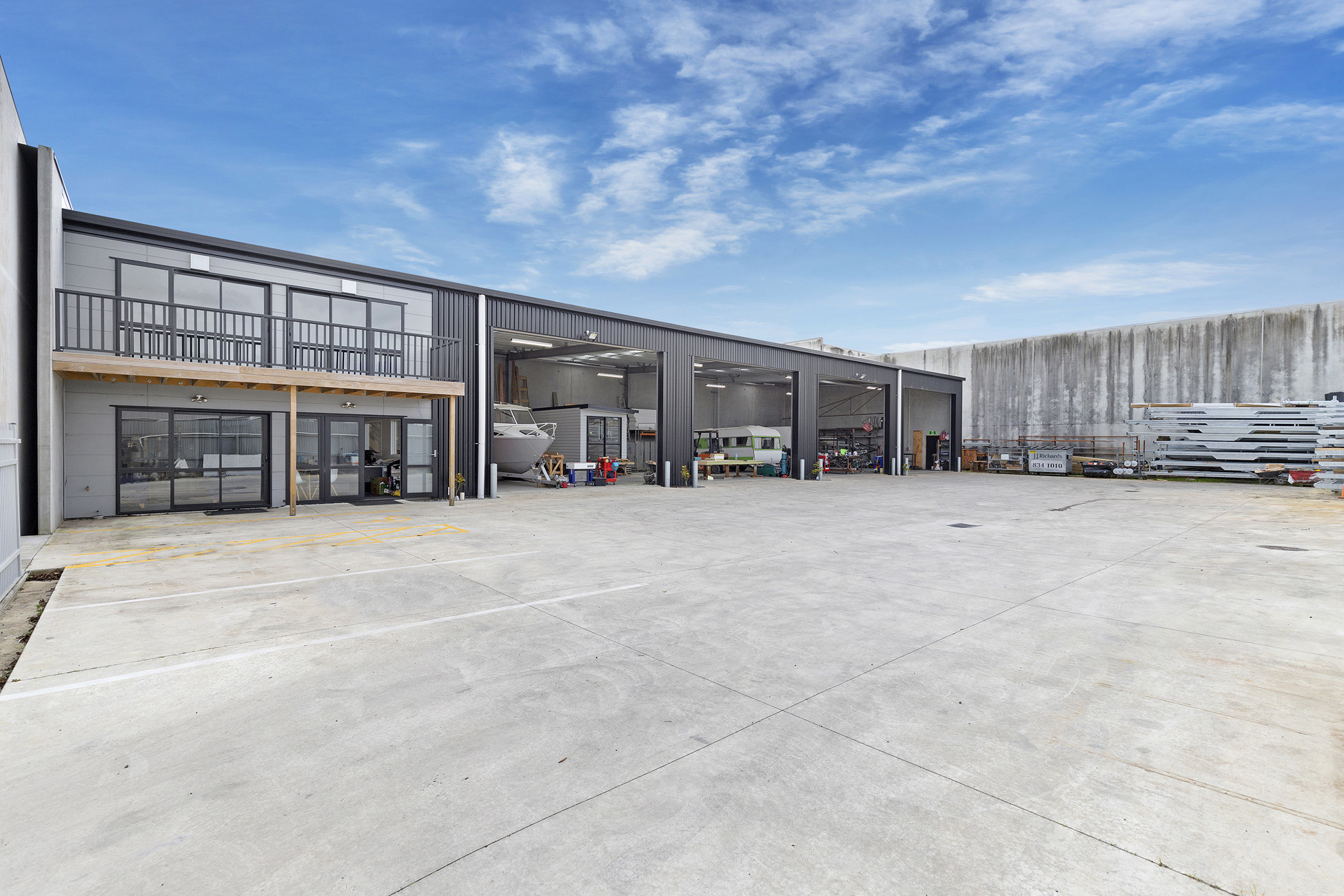Scarce commercial property opportunity in Hamilton
Hamilton’s plunging industrial vacancy coupled with
historically low interest rates have combined to create a
compelling sales pitch for an industrial property at 90 Duke
St, Frankton.
Bayleys commercial sales brokers Rebecca Bruce and Jordan Metcalfe expect significant interest from owner-occupiers due to the scarcity of well-presented modern industrial spaces.
“Low interest rates mean many commercial property owners are holding onto their investments, making it difficult for potential owner-occupiers to find premises to set up businesses or expand,” Mr Metcalfe said.
He expects commercial property investors will also be keen to check out the property for the same reasons.
The modern two-year old single-level 558 square metre building on 1545sqm of land is being sold at auction on Thursday October 31, 2019 with vacant possession - meaning a new owner occupier can move in and be trading within a short time frame. The vendor recently relocated to another site.
Mr Metcalfe’s fellow sales representative Rebecca Bruce described the property as an extremely desirable asset for wealth generation and preservation
Constructed in 2017, the centrally located low maintenance industrial property was built to all new codes and standards to give peace of mind for years ahead, she said.
It is located in the key industrial area of Frankton, close to Hamilton's central business district and minutes from State Highway 1. It has easy links to the city's commercial hub and main arterial routes that will benefit any business.
The building features a high-spec office and amenities, a 5.8 metre stud and four 6m wide roller doors. The 1545sqm land area incorporates a concrete yard that allows for easy manoeuvrability and container set-down.
The zoning is industrial as outlined in the District Plan. But it also includes provision for a range of non-industrial activities considered to be ancillary to industrial activity, that support industrial activities, or specific forms of commercial activity that are acceptable within the industrial environment.
Hamilton's booming economy and increasing population bodes well for large-scale growth and development, Ms Bruce said.
The tightly held industrial property scene is evident in the commercial vacancy level in Hamilton falling from 2.8 percent a year ago to 2.3 percent, with some researchers identifying the industrial vacancy at 1.2 percent - the lowest on record.
This is despite a sharp uplift in development activity. For example, building consents issued for industrial premises in the area that encompasses Auckland, Waikato and Bay of Plenty rose to nearly 776,000sqm over the year to April 2019, up from 600,000 square metres a year earlier, and nearly twice the 2017 April year total of 395,000 square metres.
Growth has been driven by Hamilton industrial businesses expanding as well as companies relocating from other centres and taking advantage of transport improvements such as the Te Rapa Expressway.
A Bayleys Research Golden Triangle report says the $2 billion Waikato Expressway, which has an anticipated completion date of 2020, is the most significant infrastructure project in the area.
When completed, the expressway will provide 102 kilometres of four-lane median-divided highway running through Hamilton beginning from the south of Cambridge and extending to the Bombay Hills where it will link with the Southern Motorway.
The report also reveals that rising industrial rentals range from $80 a square metre to $150/sqm for warehouses, and $180-$200/sqm for office/showroom rentals.
On the investment front, yields range between 5 percent to 7.5 percent and are forecast to firm. The value of land is between $250-$350 a square metre and described as being in short supply.
The Golden Triangle report says the Waikato region has the fourth highest average annual income in New Zealand. It has also experienced comparatively high population growth and migration from nearby regions during the past five years.
The report highlights the area’s diversity in population growth, industry types, and economic growth across the region, with Hamilton City, Waipa and Waikato districts often performing better than other areas on key indicators.
Waikato has a strong agricultural and forestry base and significant geothermal resources. Its upper North Island location makes it a nationally significant juncture for freight and transport including good infrastructure, and research and education centres.
Hamilton is approximately half way between the nation’s two business ports - Ports of Auckland and Port of Tauranga - and benefits from upgraded transport links, making it a strategic logistics and distribution hub. The development of major inland port freight depots at Ruakura and Horotiu illustrate the growing appeal of the city.



 Pamu Farms: New Zealand Farm Dog Genetic Study Shows Top Five Health Risks
Pamu Farms: New Zealand Farm Dog Genetic Study Shows Top Five Health Risks EDANZ: Payments NZ Forcing The World’s Most Aggressive Removal Of EFTPOS Terminals
EDANZ: Payments NZ Forcing The World’s Most Aggressive Removal Of EFTPOS Terminals Great Journeys New Zealand: Back By Popular Demand, The Southerner Returns
Great Journeys New Zealand: Back By Popular Demand, The Southerner Returns New Zealand Association of Scientists: Budget 2025 Robs Researchers To Pay For Regulation
New Zealand Association of Scientists: Budget 2025 Robs Researchers To Pay For Regulation Advertising Standards Authority: ASA 2024 Annual Report - Strengthening Consumer Protections With Effective Ad Self-Regulation
Advertising Standards Authority: ASA 2024 Annual Report - Strengthening Consumer Protections With Effective Ad Self-Regulation IRANZ: Budget Reaction – Time To Back Science With Long-Term Investment
IRANZ: Budget Reaction – Time To Back Science With Long-Term Investment


